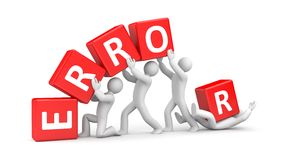Following the rapid advances being made in the field of information management in the past quarter of a century or so, computers have increasingly come to replace paper as the source in which important documents are created and stored. Till the last decade of the previous century, organizations used paper to record and document information relating to their research, development and business. From around the start of the 1990’s; the shift towards computerization of paper records has been noticeable.
Many differences between paper and electronic records
One of the defining differences between this electronic standard and traditional paper records is that while the latter used to be stored in a central, protected environment and managed by a designated managers; electronic records are spread over many locations.
Although some are managed by a central authority; most are under the control of individuals. Individuals in charge of this work have a wide range of computer based devices such as phones, laptops, tablets and USB storage devices at their disposal, which can be used for functions such as authoring, storing, and copying and transmitting relevant information.
Also, the information available on these systems can be stored and shared within several locations on the web, with the option of protecting some better than others. What has also changed substantially is the process of verifying the authenticity of a record. Earlier, the method used to authenticate paper records was via inked signatures of the author and witness. Encrypted e-signatures are replacing this practice.
Submissions to the regulatory authorities
In line with this development, the FDA and other global regulatory agencies started accepting electronic files, or at least parts of submissions, for testing and marketing drugs. This movement, which started in the early 1990’s, led to the creation of the Common Technical Document (eCTD) standard. This standard is now required in the US and most countries around the world.
If pharmaceutical and life sciences companies have to submit documents such as the NDA, ANDA, IND, BLA, DMF and the BMF to the FDA electronically, the eCTD has been the pan-industry, widely accepted standard since 2008. Submissions are, in fact, no longer done via paper records. If companies have to incorporate legacy paper records into an eCTD; they have to scan those and put them into a text readable format.
A source of important information
Despite the existence of this method; many companies continue to possess huge troves of paper based information, which are yet to enter the cyber realm. These records contain important information relating to the pre-clinical, clinical and drug safety paper records of drugs that did not make it to the marketing stage for a variety of reasons, because of which these companies have archived this information.
This archived data, if harnessed effectively, could be a rich source for offering knowledge that will go on to enhance inputs for submissions for other new or emerging indications for the drug or support efficacy or safety for related drugs. Many organizations have a large collection of paper records with retention times of 50 years or more. There is a dilemma of how to best preserve and utilize these records.
What is the way of going about for transiting?
Many companies are in a quandary about what to do in a situation in which the majority of records are electronic, but a substantial number remain as aging paper records. If the wealth of information available in paper format is to be exploited meaningfully, should they convert all the paper records to an electronic format, convert some of them, or just leave them in their current form? Given that complete conversion and subsequent integration is a very expensive and laborious exercise; a better option will be to convert on an as-needed basis.
The ways of how to do this effectively will be the topic of a highly educative webinar from Compliance4All, a provider of professional trainings for all the areas of regulatory compliance. At this webinar, Dr. Charlie Sodano, an experienced, globally recognized information management professional who launched eOrganizedWorld a consulting firm specializing in the planning and implementation of records and information management systems, will be the speaker.
To understand and have these issues resolved from the expert, please register for this webinar by logging on to Records policy and procedures
Dr. Sodano will take up and explain the issues relating to conversion of paper records into electronic, and the ways in which the submissions need to be made. This training is of importance to professionals in Research & Development, Regulatory, Clinical, Legal, Information Technology and Validation.
During the course of this session, Dr. Sodano will cover the following areas:
o Records policy and procedures
o Records data map
o Incorporating paper records into a eCTD
o Converting paper documents into a useful electronic format
o Scanning costs and resources
o Indexing and organizing scanned records and integrating them
o Long term record storage and retrieval.




























